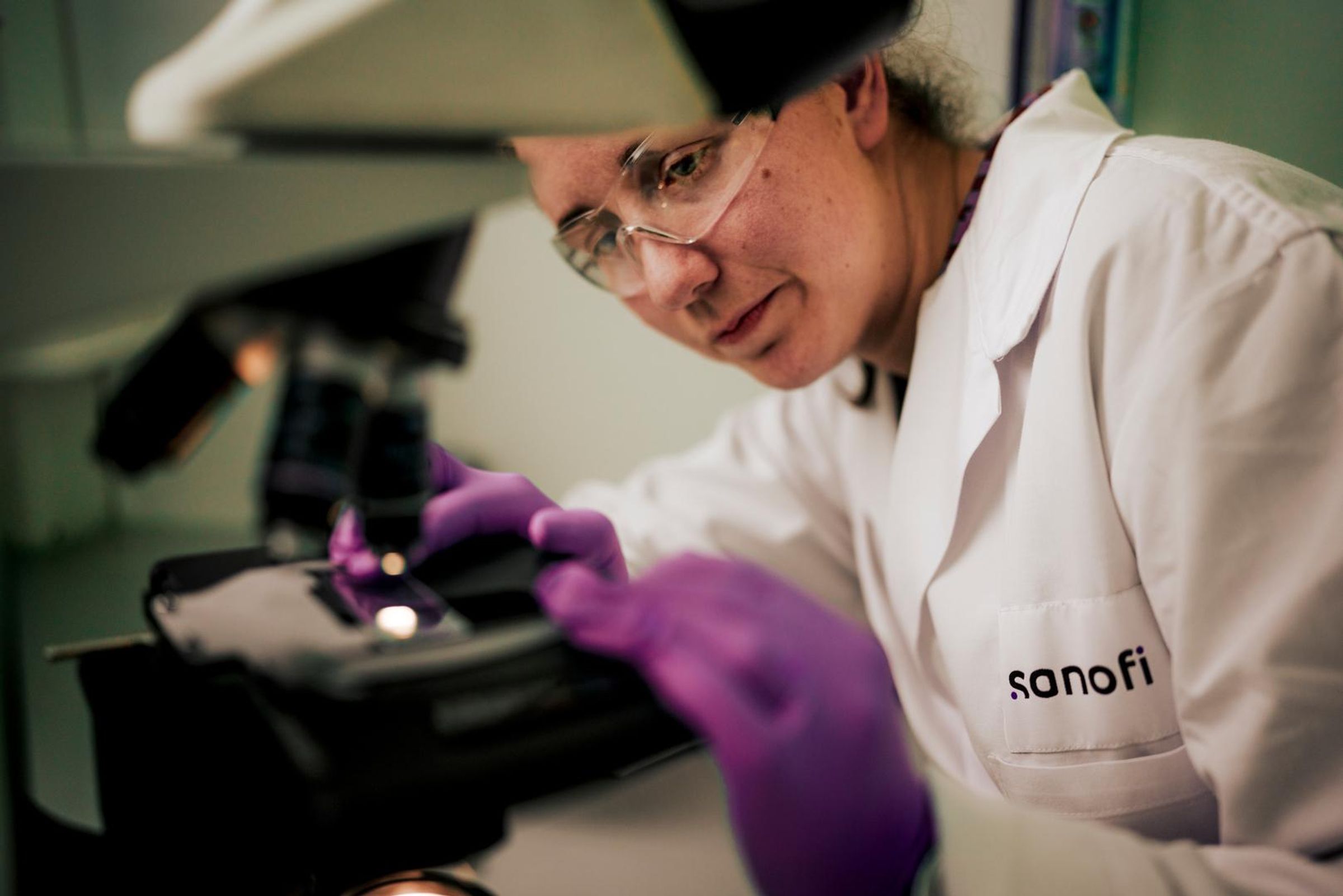How We’re Redesigning Rare Disease Research

The U.S. Food and Drug Administration (FDA) estimates that there are over 7,000 identified rare diseases in the United States. However, some experts argue that the true number may already exceed 10,000, with roughly one in 10 Americans living with a rare disease. Even with thousands of identified rare diseases, only about 5% of them have approved treatments.
Despite this staggering gap, it’s not that researchers are clueless about rare diseases when patients are diagnosed.
Most of the time, we do understand what the mechanism is. The real challenge is if we can successfully affect the disease mechanism. That is the big difference on whether you can treat a patient or not.

Pablo Sardi
Global Head of Rare Diseases at Sanofi
Even early in his training as a pharmacologist, inspired by a family of physicians, Pablo Sardi, Global Head of Rare and Neurological Diseases at Sanofi, knew he wasn’t just drawn to abstract scientific puzzles. “I wanted to do science that directly impacted patients—especially those often overlooked because of rare conditions,” Pablo recalls.
At Sanofi, Sardi’s team of researchers have been working to understand the mechanism of rare disease progression and find treatments for patients. “The mission is to make it transformational for millions of patients,” he adds. With this vision, his team is carrying out research in two different arms: the Mendelian approach and the immunoscience approach.

Illustration of gene editing targeting the immune system
Mendelian Approach
As the name suggests, in the Mendelian approach—named after Gregor Mendel, the father of genetics—scientists use advanced technologies to understand the genetic cause of a disease and then design therapies that aim to directly target the root problem. Take lysosomal storage diseases, for example. These conditions occur when certain enzymes inside lysosomes, the cell’s “recycling centers”, don’t work properly, causing harmful substances to build up in the body. Once scientists at Sanofi figured out how to deliver a working enzyme back into the lysosome, they created the potential to partially restore the cell’s recycling function.
Their first major breakthrough was developed to treat Gaucher disease, where fat-like substances accumulate in organs like the liver and spleen. That success paved the way for similar therapies for other lysosomal diseases.
Sanofi researchers were subsequently able to find treatment options for Fabry disease. It is a condition that causes pain in the hands and feet, kidney damage, and heart complications. Then they found treatment for Pompe disease, which leads to muscle weakness, breathing difficulties, and in severe cases, heart enlargement.
Using this same approach, researchers were also able to find treatments for hemophilia. In this case, researchers at Sanofi have developed therapies that either replace the missing clotting factor or rebalance the body’s clotting system. The underlying approach to finding treatment for all these diseases was similar. By understanding the exact genetic mutation or enzyme defect, researchers were able to develop therapies that either address the root cause of the imbalance or supplement what is missing, aiming to restore biological function.
Immunoscience Approach
Another major approach to finding treatment for rare diseases research at Sanofi focuses on the body’s immune system itself. The approach aims to modulate the immune response of the body, either by reducing harmful inflammation or correcting autoimmune activity. Many rare diseases are either caused or worsened by problems in the immune system, where the body mistakenly attacks its own tissues. Sanofi is taking a lead in this area by developing therapies that aim to work with the body’s own immune system—tweaking it, calming it, or guiding it back to balance.
These are known as immune-mediated therapies. In this approach, rather than targeting the genetic root of the disease (as in the Mendelian approach), researchers aim to interrupt the disease cycle, often by blocking the immune signals or cells that are doing damage. “In some of these cases, we understand the underlying mechanisms, and we also recognize how cycles of inflammation drive progressive damage. That’s where we bring in disease-modifying immune therapies,” Sardi adds.
Sanofi is applying this strategy to a growing list of rare immune-driven diseases, including Focal Segmental Glomerulosclerosis (FSGS), where circulating immune factors damage the kidney’s filtration system; Immune Thrombocytopenia (ITP), where immune cells attack platelets; Sickle Cell Disease, where inflammatory pathways contribute to debilitating vaso-occlusive crises and progressive end-organ damage.
By understanding how the immune system contributes to rare diseases, Sanofi researchers aim to develop disease-modifying treatments that offer real, lasting benefit for patients who currently have few or no options.
Challenges and Excitement Ahead
While Sardi has always been excited around understanding the mechanism of disease progression, reaching a point when his team finds a promising molecule that can actually affect that biology, and test in a live patient for the first time is “a quantum level excitement,” he says. This is because at such a stage, researchers are testing the hypothesis in people for whom a treatment would mean the world.
In most cases, the molecules that the researchers investigate don’t lead to immediate breakthroughs. That’s part of the reason so few treatments exist for rare diseases. But even when a particular molecule or technique doesn’t work right away, the research is far from wasted. “We still learn something about the molecule itself or the biology of the disease that helps us come back to the lab and drive the next discovery,” Sardi explains.
How do we get there? Stay tuned for Part 2 on Sanofi’s research in rare diseases.
Explore more
Rare Diseases R&D
Redefining R&D: How Immunoscience is Driving the Pipeline of the Future
Genomic Medicine Unit: Overcoming Gene Therapy’s Greatest Challenges
References
-
US Food and Drug Administration (2024). Rare Diseases at FDA. Accessed 03 September 2025.
-
Haendel, Melissa et al. “How many rare diseases are there?.” Nature reviews. Drug discovery vol. 19,2 (2020): 77-78. doi:10.1038/d41573-019-00180-y
-
Rare Disease Day (2019) Rare Disease Day: Frequently Asked Questions. Available at https://rarediseases.org/wp-content/uploads/2019/01/RDD-FAQ-2019.pdf